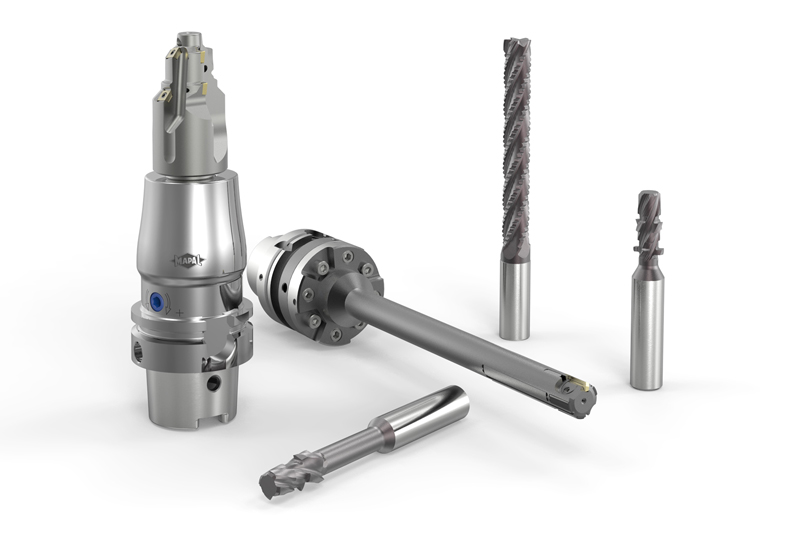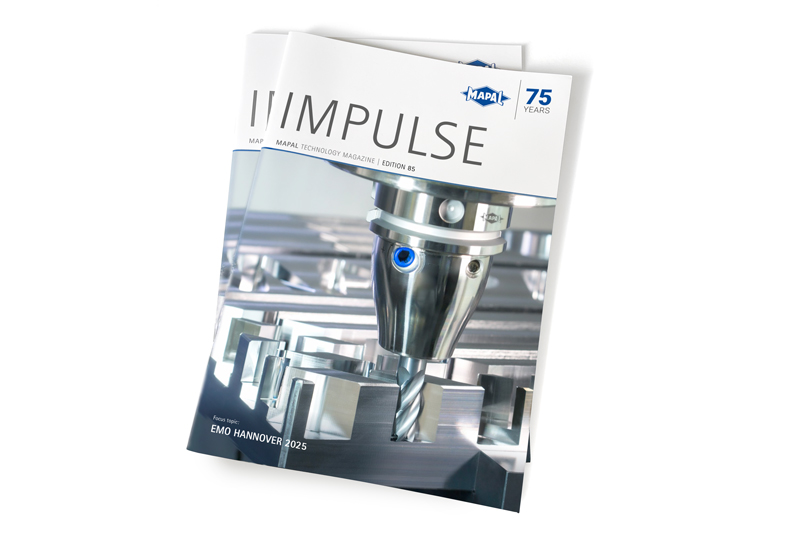22.07.2025
Tool solutions for modern combustion engines
MAPAL optimises machining for crankshafts and valve seats
Production figures for vehicles with combustion engines are in decline but are still very high, at around 75 million cars built per year. Ample reason for the industry to continue seeking ways to optimise series production. MAPAL is lending its support with new tool solutions for modern combustion and hybrid engines.
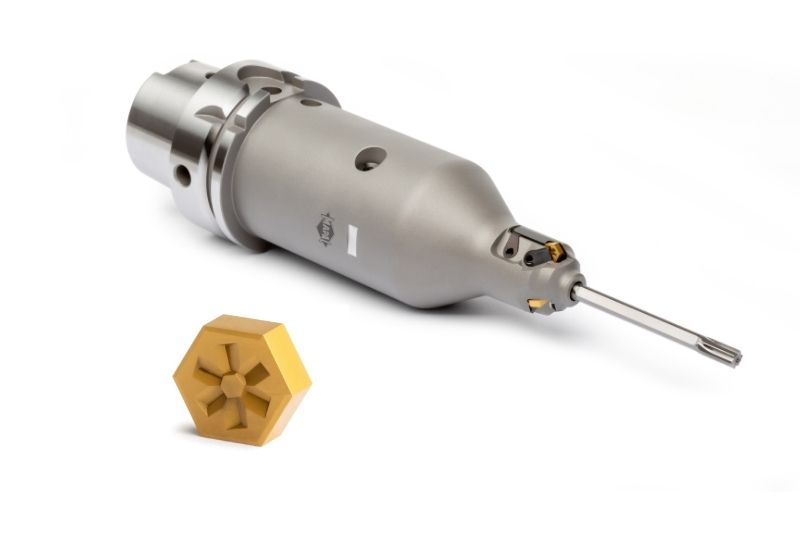
One-shot solution for drilling and deburring
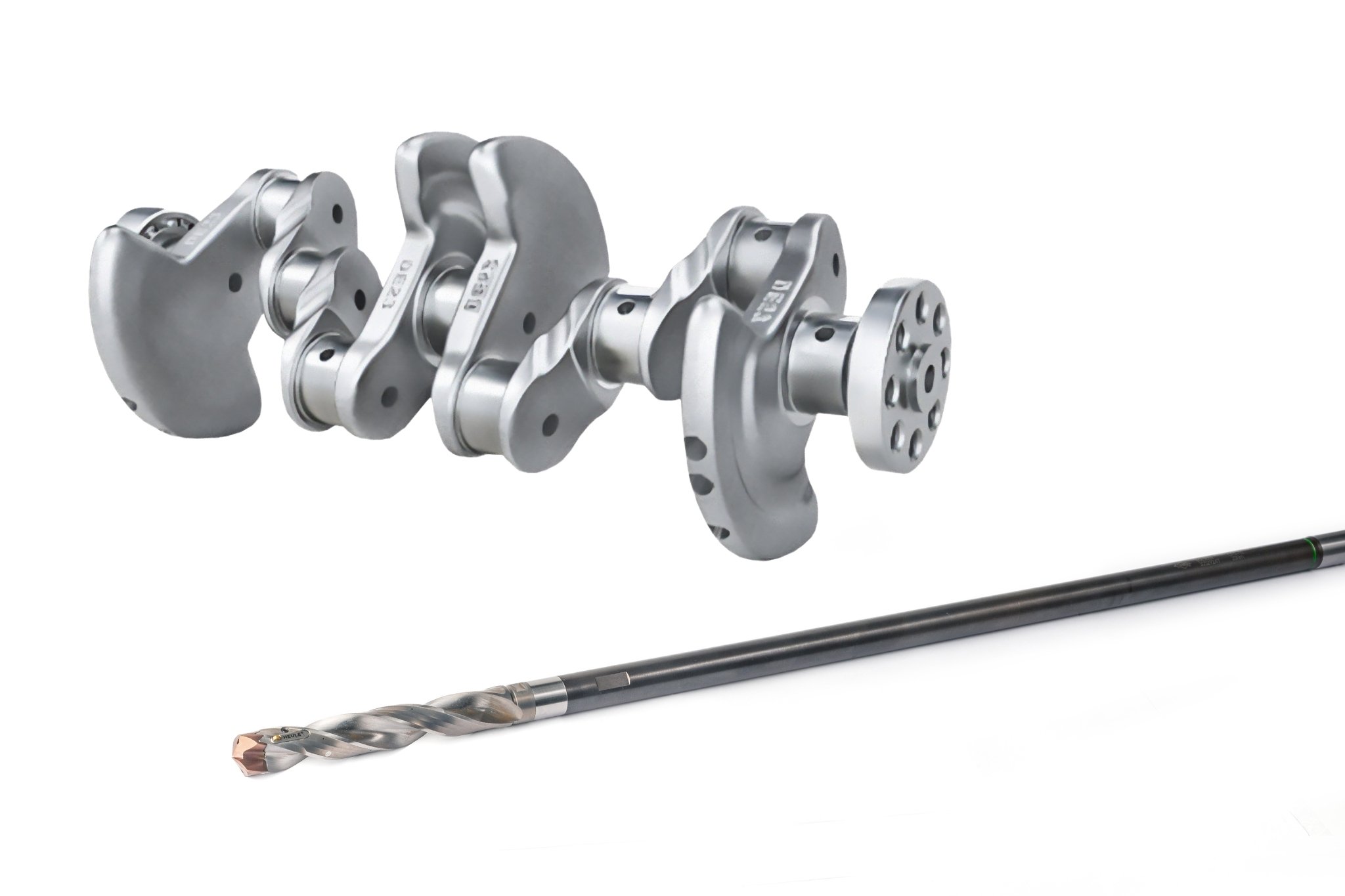
This also determines the length of the drill. To process the entire crankshaft in one go, tools with lengths between 600 and 800 mm are required. MAPAL achieves this with a modular system. The drill body is a special replaceable head holder with TTS (Torque Transfer System) connection that guarantees an extremely stable joint. The MAPAL connection features optimal torque transmission and high changeover and radial run-out accuracies. For the desired tool length, the tool holder is screwed onto an extension. The TTD replaceable drill head at the tip is available in various geometric designs depending on machine performance.
One challenge in machining is the burrs that occur in the metal when the drill goes in and out. These burrs were previously removed in a separate machining step. MAPAL now offers a one-shot solution for simultaneous drilling and deburring. This is made possible by a modular combination tool in which an additional chamfer insert is integrated into the chamfer behind the drill head. This SNAP18 module is a miniaturised deburring system that has been individually designed by HEULE Precision Tools for the application. For reliable forward and reverse deburring, a small spring controls the insert and ensures the pre-drilled diameter is chamfered to the nearest tenth and is not damaged during deburring.
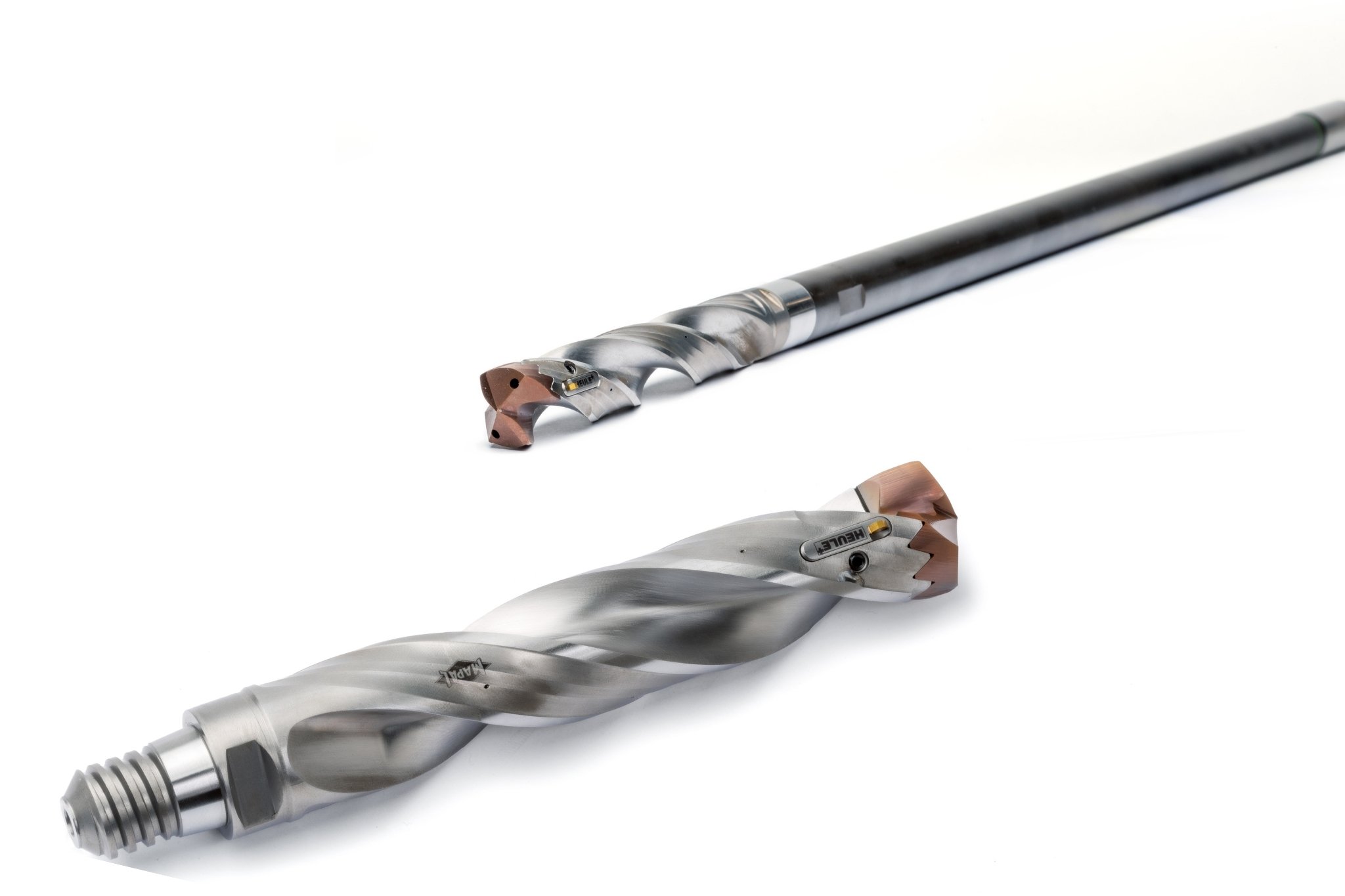
Twelve inserts for valve seats
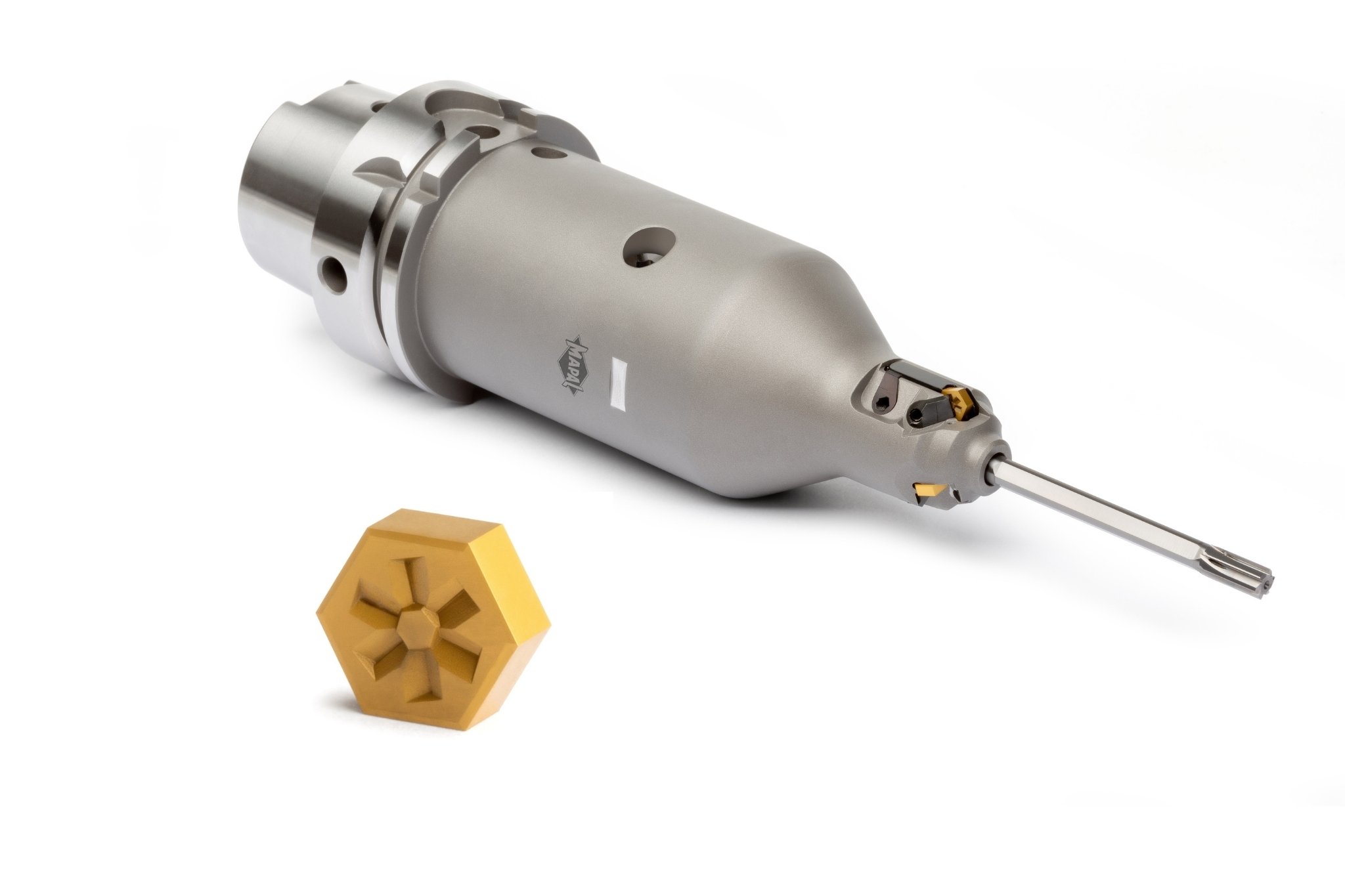
Further increase in efficiency possible for larger valve seat rings
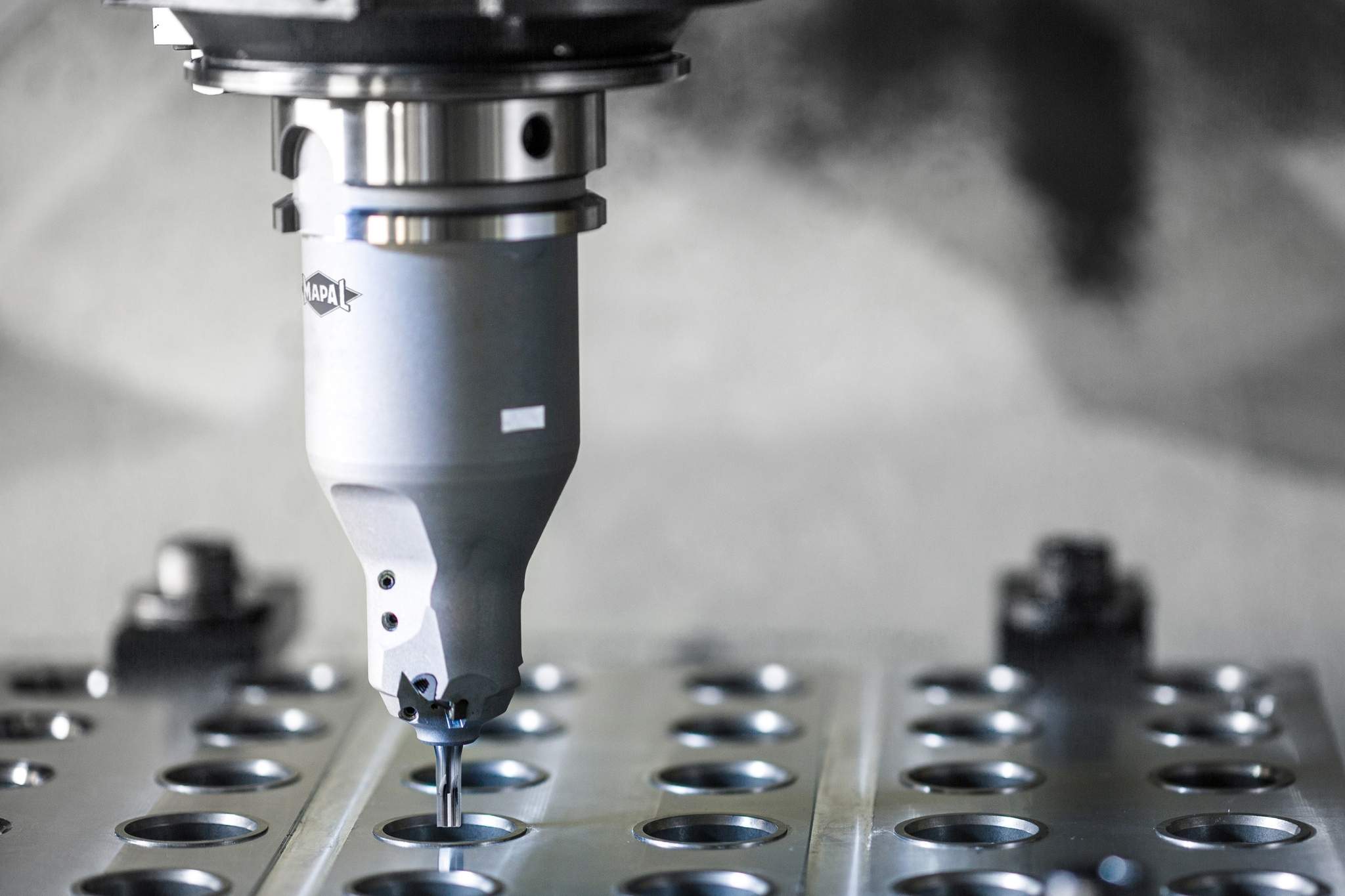
Doubling the number of cutting edges has a direct impact on the user’s production costs: The costs per part halve as a result. Tool life is also increased by the use of PcBN high-performance cutting materials developed within the MAPAL Group. Cutting materials are being customized to align with developments in the industry, enhancing the wear resistance of valve seat rings through the use of innovative materials. The robust clamping system results in maximum force closure and thus a homogeneous distribution of force in the insert seat.
Despite the clear trend towards e-mobility, the development of combustion engines continues. Not least for use in modern hybrid vehicles. MAPAL is at its customers’ sides as a technology partner and will contribute to further optimising their production in the years to come.

Contact
Mathias Ostertag Public Relations mathias.ostertag@mapal.com Phone: +49 7361 585 3566

